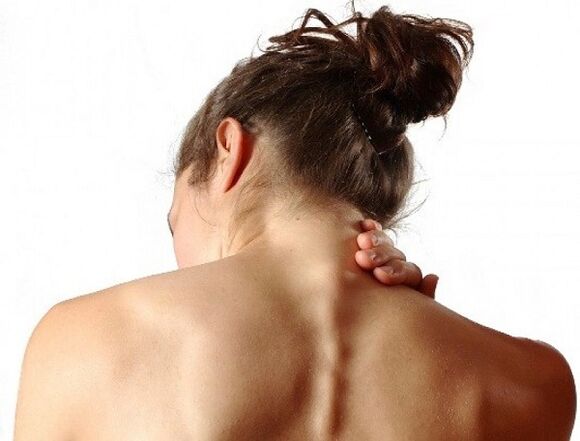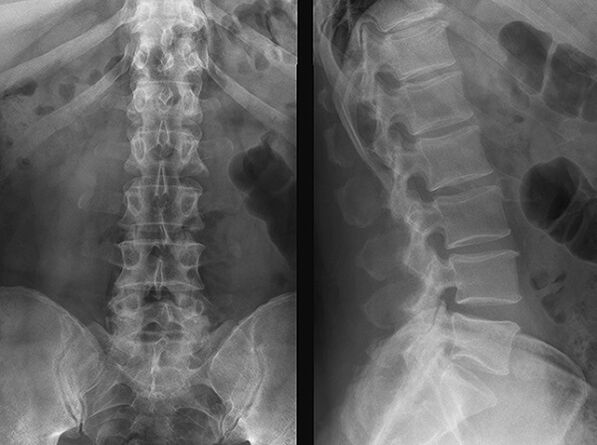Osteochondrosis is a disease of the spine, in which degenerative processes occur in the cartilage and joints. It is characterized by thinning of the intervertebral discs and a decrease in their elasticity.
Characteristics of the disease
This disease mainly affects the elderly. Although scientists note that the manifestations of the disease increasingly begin in the thirties, and even earlier. This suggests that the disease has become much younger.

Intervertebral discs provide the function of shock absorption, but in case of illness, they are not able to cope with their task. A person suffering from osteochondrosis almost always complains of pain, while pain can manifest locally and remotely. The person feels stiffness in movements, lethargy and fatigue.
Basically, the pain is manifested in the part where the disease is affected.
Localization of pathology and its types
Depending on which part of the spine is damaged by the pathology, there are 4 types of osteochondrosis:
- Cervical osteochondrosis. . . It occurs in the case of pathological changes in the cervical spine. The vertebrae become brittle, the load on the cervical spine increases, which can lead to thyroid dysfunction, constriction of the artery that supplies blood to the brain.
- Osteochondrosis of the chest. . . Pathological changes occur in the thoracic spine. It is diagnosed in patients less frequently than other types because the thoracic vertebrae are less mobile and protected by stronger muscles. The symptoms of this type are similar to cardiovascular diseases.
- Lumbar osteochondrosis. . . This type is the most common. Since the lumbar spine has the greatest load.
- Combined. . . It occurs in the case of damage to several parts of the spine at once.
In addition, the disease can affect other joints. The most common sufferers are:
- Shoulder joint. . . The disease is usually caused by the transition of osteochondrosis of the cervical spine to the shoulder joint.
- Hip joint. . . It occurs due to changes in the cartilage tissue and lack of fluid between the joints.
- Knee joint. . . Chondrosis can manifest in 3 forms:
- Coenig's disease, in which cartilage tissue is affected.
- Larsen-Johansson disease, in which changes occur in the joint above the knee.
- Osgood-Schlatter disease, associated with changes in the tibia.
Classification and degree of disease manifestation
The disease can be classified according to the degree of manifestation. At the same time, it is difficult to determine the degree of the disease before the appearance of characteristic pain. There are 4 degrees of manifestation of the disease:
- The initial stage of disease development. It occurs due to the movement of the spinal disc associated with careless lifting of weights. It is characterized by unstable feelings of pain. At this stage, the disease is difficult to diagnose, but it is easily curable.
- This phase is characterized by the gradual destruction of the intervertebral disc, dehydration, and loss of shock-absorbing properties. This leads to an increase in tension in the blood vessels and nerve endings. Feelings of pain intensify and are most pronounced with physical exertion and sudden movements. Treatment of the disease at this stage is conservative.
- The annulus fibrosus is destroyed and an intervertebral hernia appears. There is a deformity of the spine. The pain becomes significant. Treatment is possible only with surgery.
- At this stage, the vertebrae grow together due to the formation of osteophytes. Spinal tissue tightens, the vertebrae lose mobility and restrict a person's movement. At this stage, the disease can cause disability and is no longer treatable.
Typical symptoms
Each type of disease has its own symptoms. Thus, for example, cervical osteochondrosis is characterized by:
- Painful sensations in the arms and shoulder girdle.
- Headache.
- Dizziness and spots before the eyes.
- Blood pressure instability.
- Loss of sensitivity on the fingers.
- Tinnitus.
For pathology of the thoracic region, the symptoms are characteristic:
- Pain in the heart area.
- Painful sensations in hypochondria.
- Lack of air due to sharp pains of a shooting nature.
When the disease is localized in the lumbar spine, there are:
- Painful sensations in the lower back.
- Decreased sensitivity in the legs.
- Radiating pain in the legs.
- Violation of the pelvic organs.
There are also general symptoms that do not depend on the location of the disease:
- Back pain.
- Muscle cramps.
- Restriction of movement.
- Change in pain syndrome depending on load and sudden movements.
- Numbness of the limbs.
- Rapid fatigue.
- Decreased limb sensitivity.

Signs and manifestations of osteochondrosis
The first signs of the disease begin to appear in the first stage of development. These include:
- Swelling and pain in the lower back after lying in one position for more than half an hour.
- Presence of back pain after long sitting.
- The need to stretch after waking up and the inability to wake up and get up immediately.
- Spinal cramps observed.
- Chills and decreased limb sensation.
- Unpleasant sensations in the back when bending.
- General weakness.
- Violation of reproductive function and work of internal organs.
Also, osteochondrosis can be manifested by the appearance of pain when lifting weights and physical activity.
Methods for diagnosing pathology
A complex method is used to diagnose osteochondrosis. This includes:
Initial examination and examination of the patient:
- Interviewing the patient to clarify the complaints, the duration of the symptoms.
- Examination of the patient's body, study of posture, gait and movement.
- Palpation of problem areas.
- Determination of sensitivity to pain.

Instrumental diagnostics:
- X-ray to help identify deformity of intervertebral discs.
- MRI to determine the presence of a herniated disc and its location.
- Computed tomography is similar in its performance to magnetic resonance imaging, but it has a higher degree of radiation.

Methods for treating diseases
After conducting diagnostic procedures and diagnosing osteochondrosis, the doctor prescribes proper treatment.
Since osteochondrosis is treated only in the early stages of development, all major measures are aimed primarily at relieving pain. To do so, log in:
- Medications.
- Physiotherapy.
- Manual therapy.
- Mass therapy.
- Diet.
Nonsteroidal anti-inflammatory drugs are used as a drug. They are aimed at alleviating the inflammatory process in the area of the disease and blocking the pain.
Chondroprotectors are also used to regenerate cartilage tissue. Immunostimulants and vitamin complexes are used to maintain the normal functioning of the body.
Physiotherapy methods aim to suppress pain, normalize metabolic processes in the affected areas, improve blood circulation, and alleviate inflammation and edema. These include:
- Acupuncture.
- Magnetic therapy.
- Electrophoresis.
- Laser therapy.
- Paraffin therapy.
Physiotherapy methods help shorten treatment time and have fewer side effects than drug treatment.
Manual therapy is a dosed effect of the doctor's hands on the affected areas of the back, in order to remove the restrictions that interfere with the normal functioning of the joints, muscles, ligaments.
Therapeutic massage should only be performed by a specialist, and is aimed at relieving muscle tension, restoring displaced vertebrae and normalizing blood circulation. The procedure should be performed at least three times a week.
The osteochondrosis diet aims to normalize weight, improve blood circulation, restore collagen, eliminate calcium and mineral deficiencies, and help control fluid and salt intake. The diet should be balanced and contain plenty of plant foods. In the fight against osteochondrosis, it is necessary to exclude such foods as: coffee and strong tea, foods rich in salt and sugar, carbonated drinks and fatty foods.
The disease can be corrected during these procedures and only in severe stages requires surgical intervention.
Preventive measures
To prevent this disease, it is necessary to lead a healthy lifestyle and give up bad habits, apply physical activity, use an orthopedic mattress and pillow to sleep, avoid the use of uncomfortable shoes, it is better to use orthopedic shoes.
You should also follow a diet and maintain a healthy weight. With a longer stay in a static state, it is necessary to set aside time for exercises that help normalize blood circulation.
Also, for the prevention and prevention of diseases, you can undergo sanatorium treatment and generally strengthening massage.

























